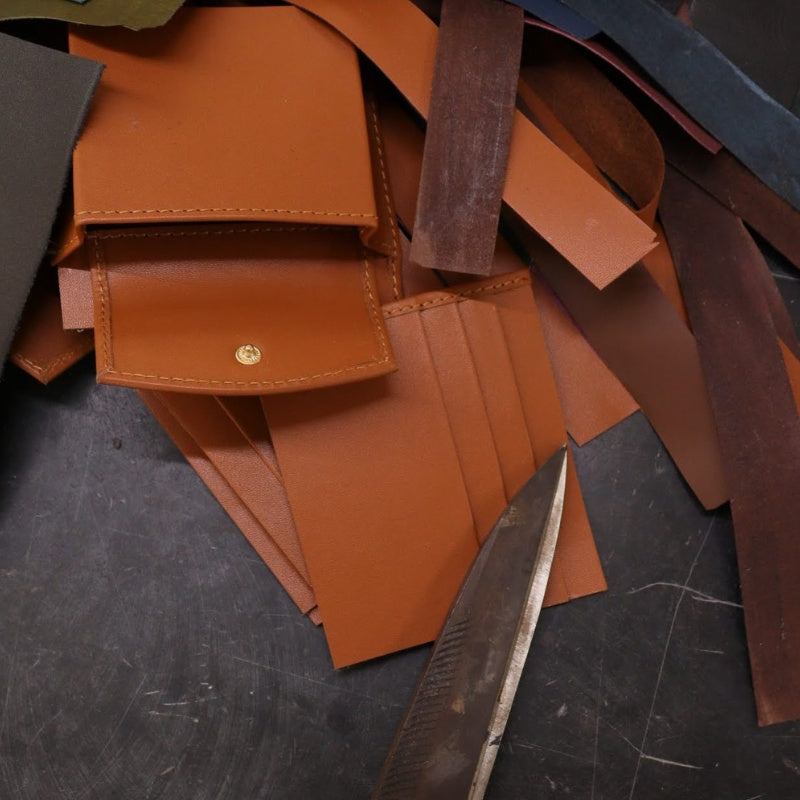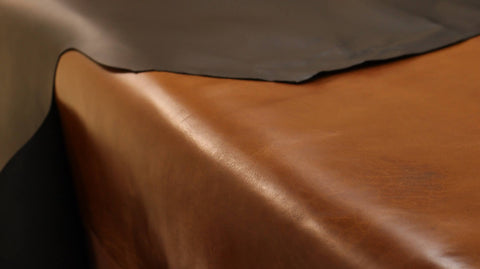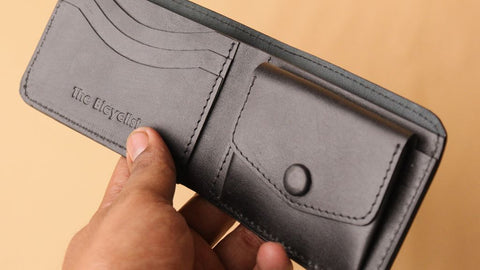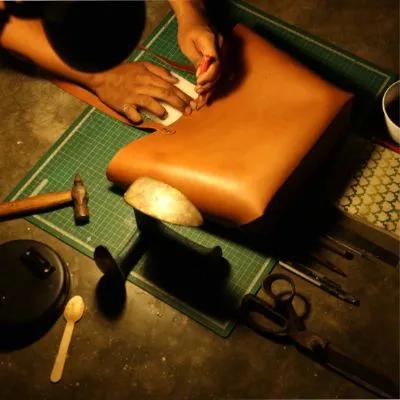
Materials for a Wallet
Share
The material of a Wallet defines its character.
Alright! So you have discovered your perfect wallet. The one that reflects your awesome personality and holds your Cash, Cards, and maybe a secret stash of sentimental treasures. But before you make your final call, let's talk materials.

Photo by Noman Khan on Unsplash
Sure any old thing could technically hold your cash, but is it something you would be proud of? Sliding it out at a coffee shop on a busy Monday morning or pulling it out on a Saturday night at your favorite restaurant? Remember, the material is what gives your wallet its character!

We will break down the different types of materials that wallets are made of and list their lifespans. This way you can choose the wallet that best suits your needs, your inner sense of style with an idea of how long your wallet can last and the price range.

Photo by Norbert Braun on Unsplash
Few materials are cut out to be made into a wallet. wallets can get crammed, contorted, and squeezed more times a day than you would realize. Imagine that rush hour commute to the office, your wallet sandwiched between your bunch of keys and some other remnants in your pocket. Not exactly a five-star experience. That constant pressure and rubbing puts some serious stress on your wallet. And not every material is built for these daily gladiatorial games.
Canvas:
A Wallet made from Canvas is the first choice if you are an adventurous hiker or a young adult in high school. It's lightweight, water resistant and a compact size perfect for a few currencies and a bunch of cards.

Photo by Matthew Moloney on Unsplash
It mostly comes with a zipped pocket and a handy clip to attach the wallet securely to your backpack or pant pockets.
As a material canvas is breathable and easy to clean, and you get them in a bunch of colors and patterns. Making them a budget-friendly choice with a bit of personality. It will last around three years with all your daily bumps and bruises.

Functionally it is a great choice, however, canvas does have a casual vibe. So while it's great for everyday adventures or a first wallet. It might not be perfect on the professional side of life. (Compiled from Discussion on Purse Blog Forum)
Pros: lightweight | easy to clean | not very expensive | variety of styles
Cons: not moisture resistant | flimsy feel | susceptible to tear
Price Range: ₹300 to ₹1000 (source)
Nylon:
For the active individual, a nylon wallet offers a compelling combination of practicality and style. Lightweight, durable, and slim, they're perfect for those whose lives revolve around adventure, sports, or simply getting things done.

Water-resistant construction protects your essentials from unexpected splashes, while the material itself resists dirt and smudges. Designs range from minimalist to sporty, with a variety of colors and prints to suit your taste.
However, while nylon excels in functionality and offers versatility in appearance, it shares a casual aesthetic with canvas.
This association with a sporty, street-style vibe might not be ideal for highly formal work environments. Additionally, nylon wallets typically carry a slightly higher price tag than canvas, with an average lifespan of 5-6 years. (Compiled from user reviews)
Pros: lightweight | easy to clean | not very expensive | variety of styles | water-resistant
Cons: does not age well | might get torn | has a flimsy feel.
Price Range: ₹800 to ₹2000 - can go higher (source)
Synthetic Leather:
Wallets made with synthetic leather (known as faux leather, vegan leather, or P-leather) can look and feel deceivingly like the real deal, especially at first glance. Plus there is a wide range of colors, prints and finishes that can be tempting!

But here’s the catch: unlike a quality leather wallet that becomes a trusted friend, synthetic wallets are more like fleeting acquaintances. They might last a few months to a year, but then yikes! The peeling starts and they transform from stylish to shabby fast.
They are built more for looks than longevity, The material is just not as robust, which explains why they lose shape and become flimsy over time. The bottom line? They will eventually end up as landfill residents soon enough.
Also known as Rexine, Vegan Leather, P-Leather, Faux Leather
Pros: lightweight | easy to clean | not expensive | variety of colors | waterproof
Cons: short lifespan | does not age well | uncomfortable plastic feel | loses its shape over time.
Price Range: ₹250 to ₹1500 - depending on the material and the quality of work (source)
Full Grain Leather:
All leather wallets are not the same. A well-made one is crafted to last and may even become an heirloom. A poorly made one might not survive your daily commute for more than a few years. Some signs call tell a well-made crafted leather wallet apart from the rest. Keep an eye out for them.

They might be a bit thicker and pricier than some other material options for wallets, but the trade-off is worth it. A smooth slide as you pull it out of your pocket, is a luxurious experience. A unique characteristic of leather wallets is, that they develop a natural patina over time. This builds a distinctive identity and eventually, becomes more than just a wallet- it becomes a cherished companion.

Handmade Bifold Leather Wallet: The Bicyclist
Pros: Highly Durable | Ages well | Comfortable supple feel | Water-resistant and breathable.
Cons: High Price | Needs maintenance over time | Bulkier than other materials.
Price Range: ₹500 to ₹3000 - can go higher (source)
Cork:
A recent entry into the wallet family of materials, cork does have its benefits. This eco-friendly material is slightly tougher than canvas or nylon, offering a winning combination of durability and lightness.

While cork matches leather in price tag, it’s a newcomer, so the jury is still out on whether it can rival leather’s legendary lifespan. Just like leather, cork comes in various grades, affecting quality. Its natural surface has visible pores, which isn't the most aesthetic, Unlike leather it also won't develop that rich patina or shine some folks love. (Compiled from Walletopia)
Pros: Durable | Lightweight | Comfortable supple feel | Water-resistant | Sustainable |
Cons: Expensive | does not have a rich aesthetic appeal | not a sturdy use experience
Price Range: ₹500 to ₹3000 - can go higher (source)

What is the Best Quality Material for Wallets?
The material you choose for your wallet goes beyond just function; it tells a story about your style and personality. While all wallets hold your essentials, some are built for an adventurous and sporty lifestyle, with features to keep your valuables safe in any situation. Others are crafted from premium materials, that exude a polished and professional air.
Leather, for example, ages beautifully with proper care. Those scuffs and wrinkles make the wallet more charming as it ages and grows old. A well-made leather wallet though, can be expensive and becomes more of an investment than just a purchase. While other materials might not develop the same charm over time, they might be more affordable and can be available in a variety of colors, patterns and prints.
At the end of the day, the quality of your wallet and its durability comes down to two things: the material itself, and how well it's made. A well-constructed wallet, regardless of material, will showcase quality through its look and feel. So, keep an eye out for those finishing touches that signal a truly exceptional wallet!


